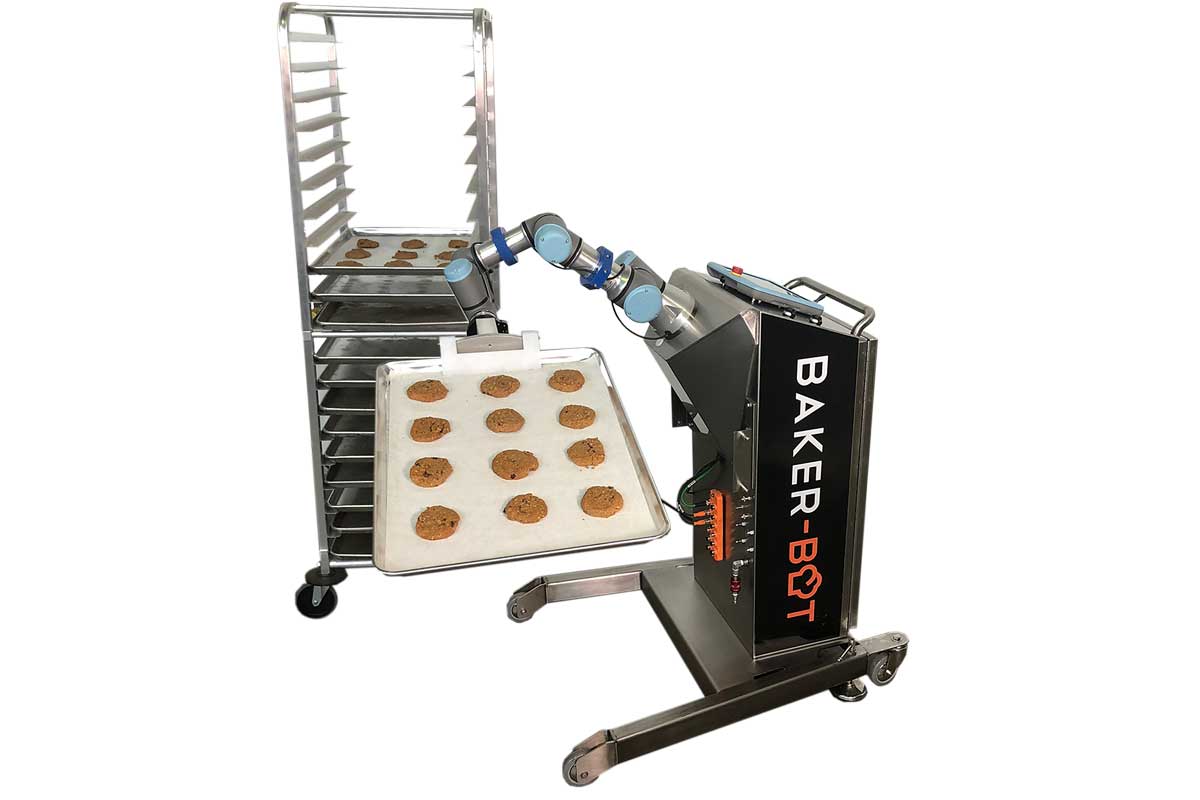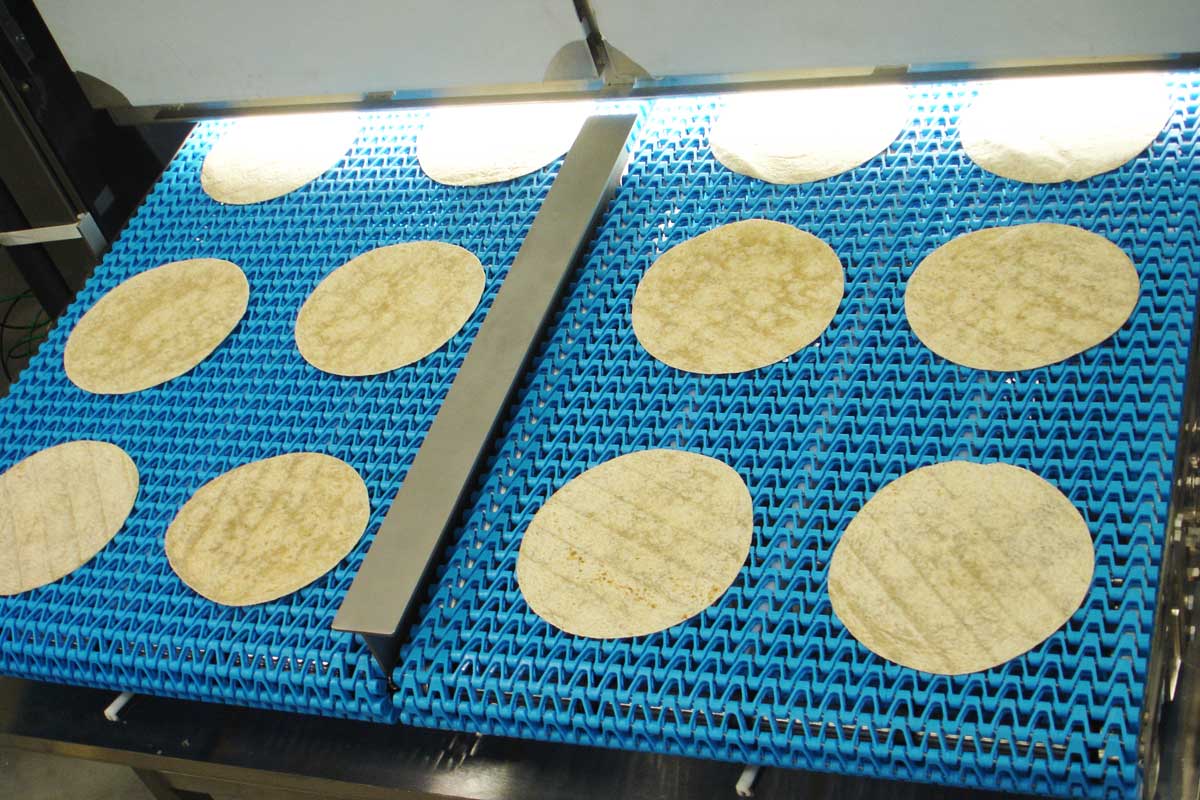Nothing fully replaces human capability in a bakery. In packaging, humans have some skills that machines can’t match. From judgment to dexterity, replicating the human touch is difficult. However, because of the labor crunch in manufacturing, bakeries are turning to automation to heighten consistency at the back of their lines, and that increasingly includes robotics.
But when do bakers make the leap to robotic systems? Small-scale bakeries and large wholesale operations can find a place for today’s applications, said Scott Williams, Northwest regional sales manager for BluePrint Automation (BPA). For most, it’s just a case of measuring the return on investment (R.O.I.).
“When transitioning into robotic packaging, the size and output of the bakery is relative,” Mr. Williams said. “However, it varies from bakery to bakery on when that move into automation will result in the best R.O.I.”
Taking the leap to invest in robotic packaging technology can seem daunting, even scary. But today’s equipment suppliers offer the support and education for any baker to make the transition.
Taming any fears
Hesitation about robotics can stem from apprehension about maintenance, training, space and support.
“We still see concern from bakers on how they will support the machine after installation with their personnel, which may have limited to zero experience in robotics,” said Rick Hoskins, president, Colborne Foodbotics.
First, Mr. Hoskins said robots today typically have an average time between failure rates of up to 100,000 hours; this equates to more than 11 years of production running 24/7, 365 days. So, there is not an expectation that maintenance personnel will be working on these robots as part of a regular routine, he said. Second, today’s leading robotics suppliers offer same-day service in many areas. Lastly, robot manufacturers often provide training support for bakery employees if needed.
Martin Riis, business development manager for Apex Motion Control, said the company helps bakers with any concerns first by simplifying the technology.
“We know a lot of times in the mid-size bakery market, we are dealing with customers who don’t have engineers on staff,” he said. “And so many times they get a little afraid when you try to deploy technology with them.”
Apex designed an interface for Baker-Bot, its collaborative robot, that replicates a smartphone application. Apex’s staff of app developers customizes an app for each bakery. Mr. Riis said any operator who knows how to use a smartphone can intuitively walk through the robot’s setup and installation.
To ease concerns about maintenance, Apex designed the Baker-Bot with three forms of connectivity. The robots can use an LAN, mobile or WiFi connection to access support. Once connection is established, Mr. Riis said Apex off-site technicians monitor the robots externally to diagnose and fix any fault codes or errors. Apex can also send a maintenance professional to the bakery for additional support.
It’s important for bakers to consider the additional resources, even if suppliers provide external support. Bill Kehrli, vice-president of sales and marketing, Cavanna Packaging USA, said robots often require computer and software technicians.
“A crescent wrench and hammer are of no use to a robot,” Mr. Kehrli said. “That is a problem for smaller bakeries because their maintenance people generally are mechanically inclined and not electrically inclined. So before small bakeries make the investment in robots, they should make the human investment or partner with a supplier that has local support or modem access to the facility to help diagnose problems.”

The flipside is that robots require lower maintenance costs than other forms of automation. Mr. Kehrli explained that instead of stocking parts needed for a mechanical device, robots require software fixes. It’s a trade-off that often balances out.
“What you’re going to save in mechanical parts, you probably need to invest in electrical programming support,” he said.
Laurie Perolio Bullinger, marketing manager, product handling group, Shuttleworth, said robotic packaging solutions require trained resources for programming and maintenance.
“A maintenance service plan with the provider ensures proper maintenance,” she said. “Partnering with a solid service group is a key for success.”
The human factor
Despite the dexterity and adaptability of manual labor in packaging, people have their limitations. Packaging motions are often repetitive and can lead to injury over time. Also, reliable employees are hard to find.
“Increased labor shortages are affecting many manufacturing companies today,” Mr. Hoskins said. “Higher wages and depleted workforces are contributing to a growing need for automation.”
Mr. Hoskins said bakers are increasingly justifying robotic investments as they can reduce labor cost.
Ultimately, robots can improve several areas of consistency in packaging. Collaborative robots often don’t dramatically increase production rates, but they improve consistency over time. And some, like the Baker-Bot, don’t take up any more room than a person on the line.
“Pick rate is typically not faster than what a human would do,” Mr. Riis said. “But what helps the baker is that the Baker-Bot will show up every day to work. It doesn’t take breaks. It stays in its location as long as product keeps coming down the line.”
Robots can alleviate several issues in the workforce. Ken Tinnell, vice-president and general manager, Shuttleworth, said one of the biggest pain points robots help with is workforce injuries.
“Robots can load and unload product into ovens or handle heavy product loads into case packers or cartoners,” he said. “If it’s a collaborative packaging line design, safeguards are built within to allow it to interact with humans. Also, repetitive tasks can be tiresome for humans, while robots are programmed for continual repetition.”
As the labor pool tightens, collaborative robots are beginning to make more sense, Mr. Kehrli said. However, bakers should consider efficiency before determining if they are the right solution.
“In certain applications, hard automation is smaller and faster like in cookie tray loading,” he said of non-robotic systems. “That said, there is a place for robot tray loading in clamshells for other products.”
Deciding if it’s the time and place requires collaboration between baker and supplier.
Evolution of efficiency
Ms. Perolio Bullinger asserted that robots can increase product throughput, reduce labor and safety costs, and provide precise movements to avid product damage, and they are reliable.
“Automating bakery processing and packaging lines through state-of-the-art robotic technologies can help many bakeries flourish in a very competitive marketplace,” she said. “A consideration for bakery manufacturers is the assortment of products being manufactured and packaged on one line and the timely processing of product changeovers and how robotics affect these.”
Some robots offer different advantages in efficiencies. Collaborative robots work with people and maintain steady production rates. Delta and pick-and-place robots dramatically increase production rates, but they require a much larger footprint.
To see a clear and quick return on investment, Mr. Riis said bakers should consider the robot’s workload. If it’s just going to operate on one line for one shift, 40 hours a week, the R.O.I. will be longer. However, if the robot is positioned on two lines that run two or more shifts per day, the payback is much shorter. Baker-Bot can perform between 20 and 30% faster than a human.
Despite the dexterity and adaptability of manual labor in packaging, people have their limitations.
“The rule of thumb that we typically see when we deploy any robotic system is that if a bakery is running two shifts over 80 hours and doing the same task during both, it’s a no-brainer to get robots into the operation,” Mr. Riis said.
Robots can increase efficiency and reduce waste while adding automated package inspection. BPA’s robotic systems also let bakers transition the valuable human resources to other areas of the line.
“By robotically automating one or more elements of an assembly or packaging line, manufacturers can increase productivity and OEE while benefiting from low total cost of operation,” Mr. Williams said.
Determining R.O.I. depends on the task a robot is deployed to execute. Mr. Hoskins said the biggest value comes from manual product handling and flexibility. End-of-arm tooling and control designs are becoming more versatile, meaning robotics are flexible for markets where bakers are often being forced to produce more stock-keeping units.
Vision and handling
Delicate baked foods require gentle handling to reduce waste and preserve product integrity through packaging, Mr. Tinnell said.
Shuttleworth’s patented Slip-Torque roller technology pairs with a collaborative robot to provide gentle but precise product placement. Shuttleworth also partnered with Soft Robotics for product handling with meal kits. This system requires no human interaction and can pick and place fresh-baked foods from bins or trays into meal kit boxes in preparation for packaging.

AMF Bakery Systems offers the flexible multi-infeed articulating arm basket and case loader. It can handle a wide variety of basket and case-loading applications, including u-board insertion. With a patented soft-touch end-of-arm tool and an infinite number of pattern development capabilities, the loader gently picks groups of products while compressing the entire pattern into the basket, tray or corrugate for a tight package to basket fit ratio.
End-of-arm tooling has advanced dramatically during the past several years, allowing robotic arms to pick up even the most delicate of products.
“For applications like croissants, we’ve developed patented end-of-arm tools that gently use both vacuum and gripper mechanisms to mimic a hand and gently pick up the baked product and move it from position A to position B,” Mr. Kehrli said.
Cavanna Packaging’s G-41 pick-and-place robots are used for cartoning and case packing. Mr. Kehrli said they are typically run in snack food operations where they can pick-and-place up to 600 products per minute per lane.
Apex also partnered with Soft Robotics to develop its end-of-arm tools. Its robots incorporate vision systems to see the shape, size and definition of a baked food, then capture it gently using suction or mechanical grippers.
“We deploy different grippers depending on what the application is,” Mr. Riis said. “So if you are picking long johns or donuts or muffins or cookies, we typically will use a soft gripper where it can form and cradle the product as needed because we can set the pressure that’s required to collect it.”
While there is a value to having people in a bakery, advances in quality control, technology and support, maintenance, and efficiency provide the option to automate packaging lines and better deal with workforce shortages.




